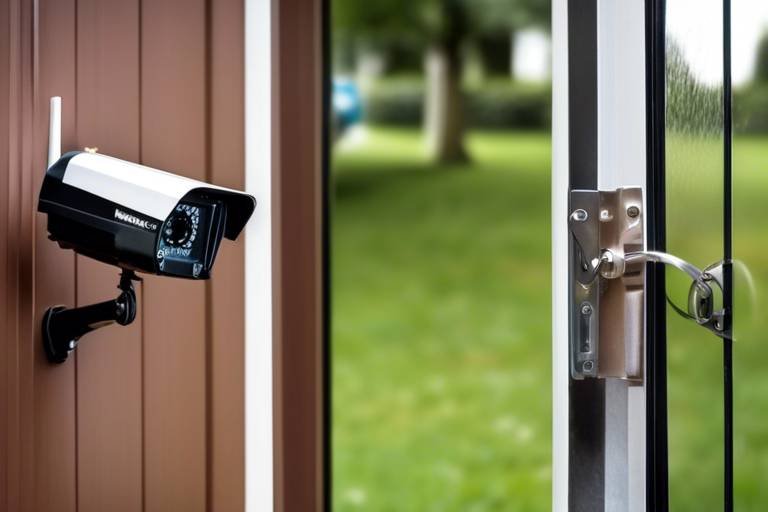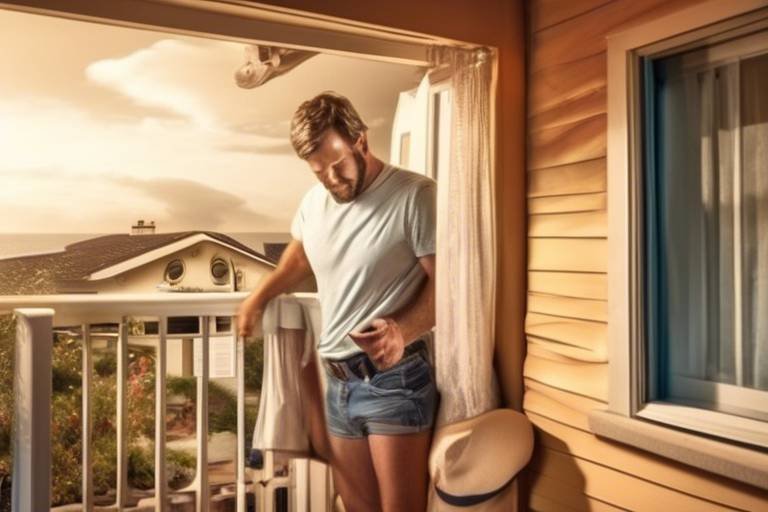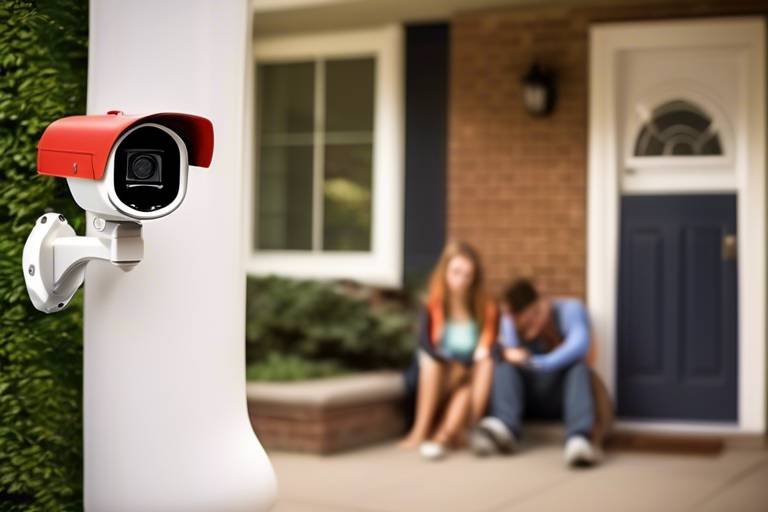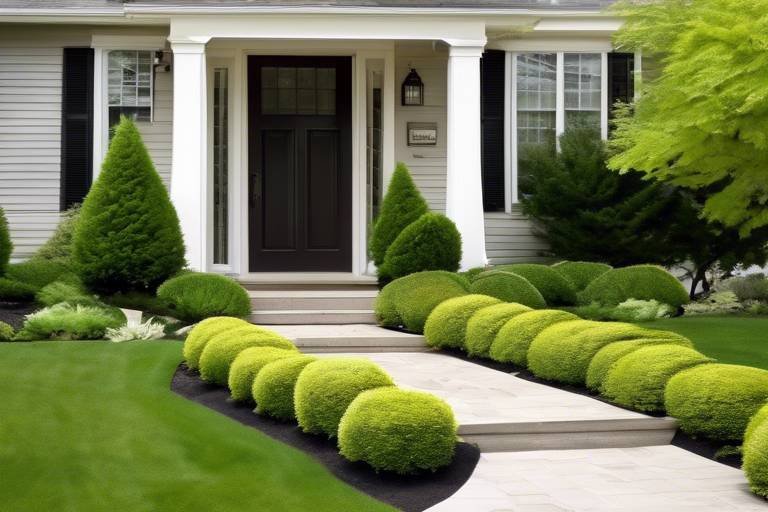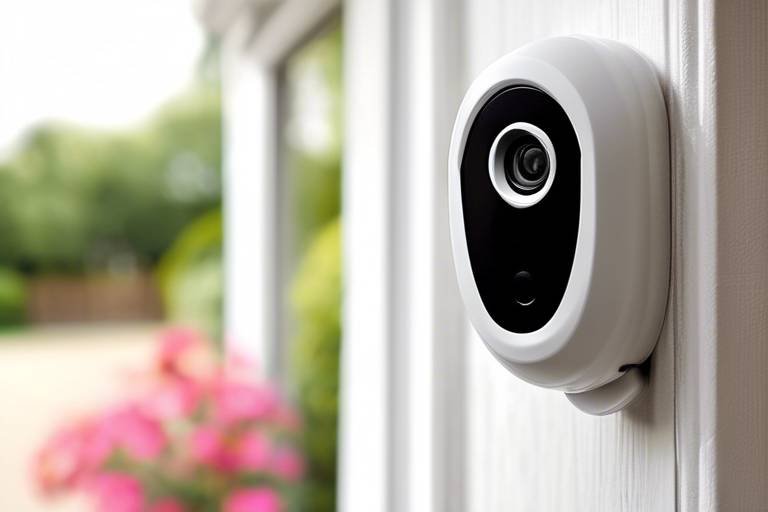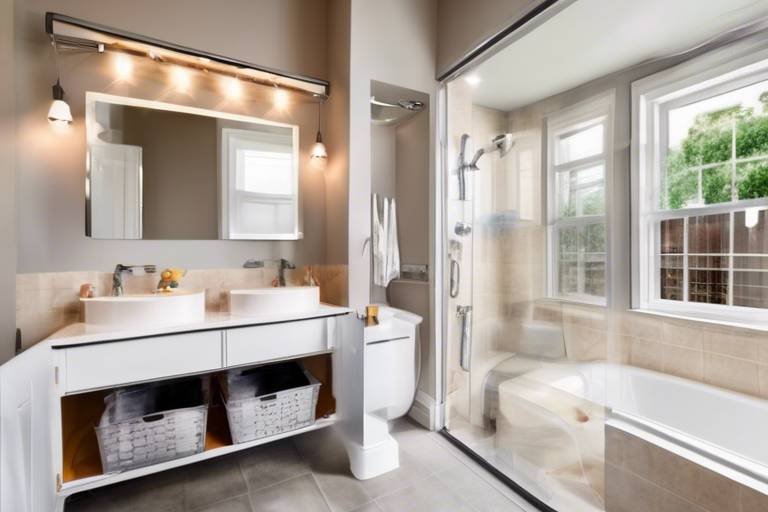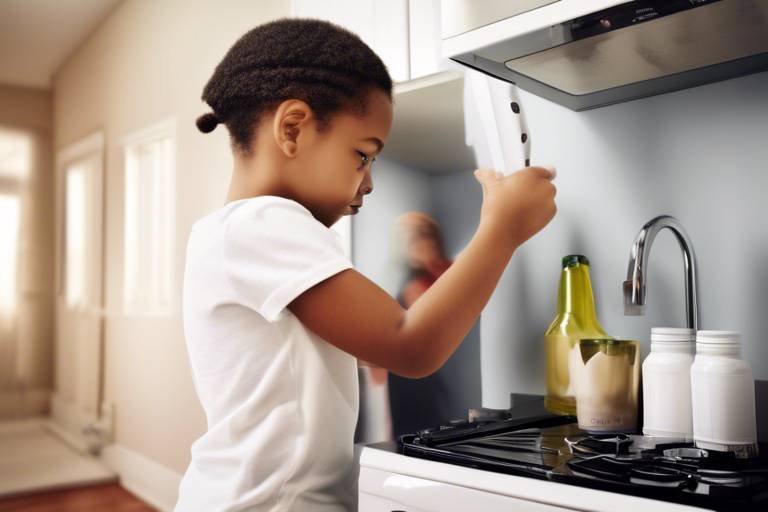Safeguarding Your Property - Outdoor Security Tips
In today's world, ensuring the safety of your property is more important than ever. With rising crime rates and the ever-evolving tactics of intruders, homeowners need to be proactive about outdoor security. This article discusses essential outdoor security measures to protect your property. From surveillance systems to landscaping strategies, these tips will help enhance your home's safety and deter potential intruders.
Before you can implement effective security measures, it's crucial to identify the weak points around your property. Start by walking around your home and evaluating the various entry points, such as doors, windows, and garages. Are there areas that are poorly lit or hidden from view? These could be potential risks. Consider creating a checklist to assess vulnerabilities:
- Entry Points: Check all doors and windows for sturdiness and locks.
- Lighting: Identify dark areas that need illumination.
- Landscaping: Look for overgrown shrubs that may provide cover for intruders.
By developing a comprehensive security strategy based on your assessment, you can effectively safeguard your home against potential threats.
One of the most effective ways to enhance your property's security is by installing surveillance cameras. Not only do they act as a deterrent, but they also provide valuable evidence in case of an incident. When considering surveillance systems, placement is key. You want to ensure that all entry points are covered, including driveways, backyards, and side entrances. The importance of monitoring cannot be overstated; regular checks can help you catch any suspicious activity before it escalates.
When it comes to selecting surveillance cameras, there are several factors to consider. Different camera types serve distinct purposes. For instance, outdoor cameras should be weatherproof, while indoor cameras can be more discreet. Here are some considerations:
- Resolution: Higher resolution cameras provide clearer images.
- Night Vision: Essential for capturing footage in low-light conditions.
- Connectivity: Consider options like Wi-Fi or wired connections based on your needs.
Choosing the right cameras tailored to your specific needs can significantly improve your security posture.
Understanding how to monitor your surveillance feeds is vital for effective security management. Many modern systems offer remote viewing options, allowing you to check your property from anywhere using your smartphone or computer. Additionally, consider your storage solutions—cloud storage can be a great option for keeping footage safe and accessible. Integrating smart technology can also provide real-time alerts, ensuring that you're notified of any suspicious activity immediately.
Proper outdoor lighting can deter intruders and enhance visibility around your property. Think of lighting as the first line of defense. By strategically placing lights around entry points and pathways, you can create a well-lit environment that leaves no hiding spots for potential intruders. Consider using motion sensors and timers to ensure that lights are activated when needed, providing an extra layer of security without the need for constant manual operation.
Your landscaping choices can significantly impact your home's security. While you want your property to look beautiful, it's essential to consider how your plants and structures can serve as natural barriers. For example, thorny shrubs can deter trespassers, while maintaining clear sightlines can help you spot any suspicious activity. It’s all about balance—creating an aesthetically pleasing environment while remaining vigilant about security.
Selecting the right plants can enhance security without compromising beauty. Consider incorporating thorny shrubs like roses or barberry, which can act as a natural deterrent. Additionally, low-maintenance options such as evergreens can provide year-round coverage and privacy.
A sturdy fence can be a significant deterrent against trespassers. When exploring fencing options, consider various materials such as wood, vinyl, or metal. Each has its benefits, from aesthetics to durability. Make sure your gates are equally secure, equipped with quality locks and potentially monitored for additional safety.
Building relationships with your neighbors can enhance security in your neighborhood. Engaging in neighborhood watch programs creates a network of vigilance, where everyone looks out for one another. This communal approach not only fosters a sense of belonging but also significantly increases the chances of identifying and deterring suspicious activities. Remember, safety is a shared responsibility!
Q: How can I improve my outdoor security without spending a lot of money?
A: Start with simple measures like improving lighting, trimming overgrown shrubs, and installing DIY security cameras. Every little bit helps!
Q: What types of surveillance cameras are best for outdoor use?
A: Look for weatherproof cameras with night vision capabilities and high resolution for optimal performance.
Q: How can community engagement improve security?
A: Neighbors working together can create a watchful environment, making it harder for intruders to operate unnoticed.

Assessing Your Property's Vulnerabilities
When it comes to safeguarding your home, the first step is to identify its vulnerabilities. Think of your property as a fortress; if you don’t know where the weak points are, how can you effectively defend it? Start by walking around your property and taking a close look at every potential entry point. Are your doors and windows secure? Are there any areas that are poorly lit or hidden from view? These are essential questions to consider.
One of the most critical aspects of this assessment is to evaluate not just the physical barriers but also the surrounding environment. Look for things like tall shrubs or trees that could provide cover for an intruder. You might love that big bush in the front yard, but if it blocks the view of your front door from the street, it might be time to reconsider its placement. It’s all about balancing aesthetics with security.
Next, consider your property's layout. Is there a clear path that someone could take to access your home without being seen? If your driveway leads directly to your front door without any obstacles, this could be an open invitation for unwanted guests. Think about ways to create natural barriers that can help deter potential intruders while still keeping your yard looking beautiful. For instance, strategically placed shrubs can help obscure views into your home without making it feel like a fortress.
Additionally, it’s wise to assess your security systems—if you have them. Are your cameras positioned to cover all entry points? Do they have blind spots? A well-placed camera can be a significant deterrent, but if it doesn’t capture the right angles, it won’t be effective. Consider creating a simple
| Vulnerability | Potential Solution |
|---|---|
| Poorly lit entry points | Install motion-activated lights |
| Obstructed views | Trim or relocate shrubs |
| Weak door locks | Upgrade to high-security locks |
| Unmonitored windows | Add window sensors or cameras |
Lastly, don’t forget about your neighbors. Sometimes, the best security measures come from community vigilance. Talk to your neighbors about any concerns you have and encourage them to do the same. If everyone is aware of their surroundings, it creates a sense of collective security that is hard for intruders to penetrate. After all, a watchful neighborhood is like a well-guarded castle!
In summary, assessing your property’s vulnerabilities is not just about looking for weaknesses; it’s about creating a comprehensive strategy that combines physical security measures with community awareness. By taking the time to evaluate your home thoroughly, you can significantly enhance its safety and deter potential intruders.
- How often should I reassess my property’s vulnerabilities? It's a good idea to reassess at least once a year or after any significant changes to your property or neighborhood.
- What are the most common vulnerabilities in homes? Common vulnerabilities include poorly secured doors and windows, inadequate lighting, and obstructed views.
- Can landscaping really impact my home security? Absolutely! Strategic landscaping can create natural barriers and enhance visibility, making it harder for intruders to approach unnoticed.
- Should I invest in a security system? Yes, a security system is a worthwhile investment, especially if it includes monitoring and surveillance capabilities.

Effective Surveillance Systems
When it comes to safeguarding your property, one of the most effective tools at your disposal is a robust surveillance system. Imagine this: you're at work or on vacation, and you receive a notification on your phone that your security camera has detected movement at your front door. This peace of mind is invaluable, and it all starts with understanding the various components of a surveillance system.
First off, let's talk about the different types of cameras available. Each camera serves a unique purpose, and selecting the right one can make all the difference. For instance, you might consider:
- Bullet Cameras: These are perfect for long-distance viewing and can be mounted on walls.
- Dome Cameras: These are discreet and less likely to be tampered with, making them ideal for indoor use.
- PTZ Cameras: Short for Pan-Tilt-Zoom, these cameras can be controlled remotely to cover a wide area.
When evaluating which camera types to install, think about your specific needs. Do you need high-resolution footage to capture details? Are you concerned about night-time visibility? Cameras with night vision capabilities are essential for monitoring in low-light conditions. Additionally, consider the connectivity options available. Wireless cameras offer flexibility in placement, while wired cameras can provide a more stable connection.
Placement of your cameras is equally crucial. You want to ensure that they cover all potential entry points without leaving any blind spots. Common areas to install cameras include:
- Front and back doors
- Garages and driveways
- Windows that are easily accessible
- Common areas in your backyard
Once your cameras are in place, the next step is monitoring. Understanding how to effectively monitor your surveillance feeds is vital. Many modern systems offer remote viewing options, allowing you to check your property from anywhere using your smartphone or computer. This feature ensures that you are always connected to your home, no matter where you are. Moreover, consider the storage solutions available for your footage. Cloud storage options provide a secure way to access your recordings, while local storage can be a cost-effective alternative.
Integrating smart technology into your surveillance system can take your security to the next level. With real-time alerts, you can receive notifications about suspicious activity as it happens. Imagine receiving an alert while you’re out, prompting you to check the live feed and take action if necessary. This level of responsiveness can deter potential intruders and enhance your overall security.
In summary, an effective surveillance system is not just about having cameras; it’s about choosing the right types, placing them strategically, and utilizing advanced monitoring technologies. By investing in a comprehensive surveillance solution, you can significantly enhance the security of your property, providing you with peace of mind and a safer environment.

Choosing the Right Cameras
When it comes to securing your property, selecting the right surveillance cameras is like choosing the right armor for a knight. You want to ensure that your defenses are not only effective but also tailored to your specific needs. The market is flooded with options, and understanding the features that matter most can be overwhelming. So, let’s break it down and make it simpler.
First off, consider the resolution of the cameras. Higher resolution means clearer images, which can be crucial in identifying intruders. A camera with at least 1080p resolution is often recommended for residential security. You wouldn't want to miss a crucial detail because of a blurry image, right?
Next, think about night vision. Most break-ins occur at night, so having cameras that can capture clear footage in low-light conditions is essential. Look for cameras equipped with infrared technology, which allows them to see in complete darkness. This feature acts like a flashlight for your camera, illuminating the dark corners of your property.
Another vital aspect is connectivity. Do you prefer a wired or wireless setup? Wired cameras tend to be more reliable and less prone to interference, but they can be more challenging to install. On the other hand, wireless cameras offer flexibility and easier installation but may require a strong Wi-Fi signal to function effectively. It’s like choosing between a sturdy bridge and a floating raft; both have their advantages and disadvantages.
For added security, consider smart cameras that integrate with your home automation system. These cameras can send real-time alerts to your smartphone, allowing you to monitor your property from anywhere. Imagine sipping coffee at a café and receiving an alert about movement in your yard. That level of awareness can be a game-changer.
Lastly, don’t forget about the placement of your cameras. Position them strategically to cover all entry points and blind spots. A well-placed camera can act as a deterrent to potential intruders. Think of it as setting up a watchtower that keeps an eye on your castle.
In summary, when choosing the right cameras, focus on resolution, night vision, connectivity, smart features, and strategic placement. These factors will help you build a robust surveillance system that not only protects your property but also gives you peace of mind.
- What resolution should I look for in security cameras? Aim for at least 1080p for clear images.
- Do I need night vision cameras? Yes, especially since most break-ins occur at night.
- Are wired cameras better than wireless? Wired cameras are generally more reliable, but wireless cameras offer easier installation.
- Can I monitor my cameras remotely? Yes, many modern cameras offer remote viewing options through smartphone apps.

Monitoring Options
When it comes to safeguarding your property, having a robust surveillance system is just the beginning. The real magic happens when you effectively monitor those feeds. Imagine being able to keep an eye on your home, no matter where you are—sounds like a dream, right? Well, it’s more achievable than you might think! With today's technology, you can choose from a variety of that fit your lifestyle and security needs.
First off, let’s talk about remote viewing. Many modern surveillance cameras come equipped with apps that allow you to check in on your property from your smartphone or tablet. This means whether you’re at work, on vacation, or just out for a quick errand, you can see what's happening at home in real-time. Isn't it comforting to know that you can check on things with just a few taps on your screen? With features like live streaming and the ability to pan, tilt, and zoom, remote viewing can make you feel like you’re right there, keeping watch.
Now, let's not forget about storage solutions. Monitoring is great, but if you aren’t storing that footage somewhere, it’s like taking a picture and then losing it! There are various options available, from local storage on a hard drive to cloud storage solutions that keep your data safe and accessible. Cloud storage is particularly appealing because it allows you to access your footage from anywhere and protects your data from being lost or damaged. Just think of it as your digital safety deposit box, keeping your recordings secure and easy to retrieve.
Another exciting advancement in home security is the integration of smart technology. Have you ever heard of smart alerts? These nifty features can send notifications straight to your phone whenever motion is detected or if there’s a significant change in your property’s environment. Imagine receiving a ping while you’re out and about, alerting you to a potential intruder or unexpected visitor. It’s like having a virtual guard dog that never sleeps!
But wait, there’s more! Many systems now allow for two-way audio, meaning you can not only see what’s happening but also communicate through your camera. This is particularly useful if you want to deter an intruder by simply saying, “Hey, you’re on camera!” or if you want to check in on a family member. It adds another layer of interaction that can be incredibly effective.
To summarize, the options for monitoring your surveillance feeds are plentiful and can be tailored to fit your unique needs. Here’s a quick rundown of some key features to consider when selecting your monitoring system:
| Feature | Description |
|---|---|
| Remote Viewing | Access live footage from your smartphone or tablet. |
| Storage Solutions | Options include local hard drives and cloud storage for easy access. |
| Smart Alerts | Receive notifications for motion detection and environmental changes. |
| Two-Way Audio | Communicate through the camera to interact with visitors or deter intruders. |
In conclusion, investing in the right monitoring options can significantly enhance your home security. By combining remote viewing, smart alerts, and effective storage solutions, you can create a comprehensive security system that not only keeps you informed but also gives you peace of mind. So, what are you waiting for? It’s time to take control of your property’s safety!
- What is remote viewing? Remote viewing allows you to access live video feeds from your surveillance cameras via a smartphone or tablet app.
- How does cloud storage work? Cloud storage saves your video footage on secure servers, allowing you to access it from anywhere with an internet connection.
- Can I communicate through my security camera? Yes, many modern cameras come with two-way audio, enabling you to speak to anyone on your property.
- What should I look for in a monitoring system? Consider features like remote viewing, storage options, smart alerts, and two-way audio to find a system that meets your needs.

Lighting for Security
When it comes to safeguarding your property, lighting plays a pivotal role. Imagine walking through a dark alley; the shadows can be both eerie and inviting for those with less-than-honorable intentions. Proper outdoor lighting not only illuminates your surroundings but also acts as a deterrent against potential intruders. By strategically placing lights around your home, you can create a well-lit environment that makes it difficult for anyone to approach unnoticed.
One of the most effective lighting strategies involves the use of motion sensor lights. These lights automatically turn on when they detect movement, startling any unwanted visitors and alerting you to their presence. Picture this: it's a quiet night, and suddenly, your yard is flooded with light as a figure approaches. That unexpected brightness can be enough to send an intruder running for the hills. Not only do motion sensors enhance security, but they also save energy, as they only operate when needed.
Another valuable tactic is to incorporate timers and smart lights into your outdoor lighting system. By setting timers, you can ensure that your lights turn on at dusk and off at dawn, creating the illusion that someone is home, even when you’re not. Smart lights, on the other hand, allow you to control your outdoor lighting from your smartphone, giving you the flexibility to turn lights on or off remotely. This feature can be particularly useful if you’re on vacation and want to maintain the appearance of activity at your home.
When planning your outdoor lighting, consider the following areas to illuminate:
- Entry points such as doors and windows
- Driveways and walkways
- Patios and decks
- Dark corners of your yard
It's important to choose the right type of lighting for these areas. For instance, LED lights are a popular choice due to their energy efficiency and long lifespan. They produce bright light and can be installed in various fixtures, from wall-mounted sconces to floodlights. Additionally, solar-powered lights are an excellent eco-friendly option for illuminating pathways and gardens, requiring no wiring and minimal maintenance.
Lastly, don't overlook the aesthetic aspect of your outdoor lighting. A well-lit home not only enhances security but also adds to the overall curb appeal. Consider using decorative fixtures that complement your home’s architecture while providing adequate illumination. By combining functionality with style, you can create a welcoming atmosphere that keeps your property safe.
- What type of outdoor lighting is best for security? Motion sensor lights and LED floodlights are highly effective for security purposes.
- How can I save energy with outdoor lighting? Use motion sensors and timers to ensure lights are only on when needed, and opt for energy-efficient LED bulbs.
- Is solar lighting effective for security? Yes, solar lights can be effective for lighting pathways and gardens, providing illumination without the need for electrical wiring.
- How can I integrate smart technology into my outdoor lighting? Smart lights can be controlled via smartphone apps, allowing you to manage your outdoor lighting remotely.

Landscaping for Safety
When it comes to safeguarding your property, landscaping might not be the first thing that comes to mind. However, it plays a crucial role in enhancing your home's security. Think of your yard as a protective shield; the way you design and maintain it can either invite trouble or deter potential intruders. By strategically utilizing plants, trees, and fencing, you can create an environment that not only looks beautiful but also acts as a formidable barrier against unwanted visitors.
One of the most effective landscaping strategies is to use natural barriers. For instance, planting thorny shrubs near windows or entry points can make it uncomfortable for anyone trying to gain unauthorized access. These plants serve a dual purpose: they beautify your yard while providing a prickly deterrent. Additionally, maintaining a clear line of sight to your home is essential. Overgrown bushes or trees can provide cover for intruders, so it’s vital to keep those trimmed back. Imagine your yard as a stage where the performance of safety unfolds; every element should contribute to the overall security narrative.
Another aspect to consider is the use of fencing and gates. A sturdy fence not only defines your property lines but also acts as a physical barrier that can deter trespassers. When choosing fencing materials, consider options like wrought iron or vinyl, which offer both durability and aesthetic appeal. You might opt for a tall fence with pointed tops, which can create an imposing presence. Additionally, installing a lockable gate adds an extra layer of security. Think of your fence as the first line of defense, standing tall and proud against any potential threats.
Furthermore, the choice of plants can significantly impact your home's safety. Selecting low-maintenance, thorny plants such as barberry or hawthorn can enhance security without adding too much upkeep. These plants are not only resilient but also offer a natural deterrent against intruders. Imagine the feeling of peace knowing that your landscaping is working in tandem with your security measures to keep your home safe.
As you plan your landscaping, consider incorporating a variety of heights and densities. A mix of tall trees, mid-height shrubs, and low-lying plants can create a layered effect that adds depth to your garden while providing strategic hiding spots for security purposes. Additionally, placing gravel or rocks around pathways can make noise when someone walks on them, alerting you to any unusual activity. Just like a well-orchestrated symphony, every element of your landscape should harmonize to create a secure and inviting atmosphere.
Ultimately, landscaping for safety is about striking a balance between aesthetics and security. By thoughtfully designing your outdoor space, you can create a welcoming environment that also serves as a fortress for your home. Remember, a little creativity goes a long way in safeguarding your property while ensuring it remains a beautiful place to live.
- How can landscaping improve my home security? Landscaping can create natural barriers, enhance visibility, and deter intruders through the strategic placement of plants and fencing.
- What types of plants are best for security? Thorny shrubs like barberry and hawthorn are excellent choices as they provide both beauty and protection.
- Should I trim my bushes and trees? Yes, keeping your landscaping well-maintained ensures clear sightlines and reduces hiding spots for potential intruders.
- What fencing materials are most effective? Durable materials such as wrought iron or vinyl are highly recommended for their strength and aesthetic appeal.

Choosing the Right Plants
When it comes to enhancing the security of your property, the choice of plants can play a surprisingly pivotal role. Imagine your garden not just as a beautiful landscape but as a **natural fortress** that deters unwanted visitors. The right plants can create a **visual barrier** while also providing practical security benefits. So, what should you consider when selecting plants for your outdoor space? Let’s delve into the essentials!
First and foremost, consider the **height and density** of the plants. Tall, dense shrubs can obstruct the view of your property from the street, making it harder for intruders to scope out your home. Moreover, plants with **thorny or spiky characteristics** can act as a **natural deterrent**. For instance, varieties like **barberry** or **Holly** not only add aesthetic value but also create an effective barrier. Not to mention, they can be quite beautiful when in bloom!
In addition to security, you’ll want to think about the maintenance of these plants. Some homeowners may prefer low-maintenance options that still provide a strong defense. Here are a few suggestions:
- Roses: With their thorns, they can be a stunning yet protective choice.
- Berberis: Known for their sharp thorns, these shrubs are hardy and require minimal care.
- Boxwood: While not thorny, their dense foliage can act as a formidable barrier when trimmed properly.
Moreover, consider the **placement** of these plants. Positioning them strategically around windows, doors, and other entry points can enhance their effectiveness. For example, planting thorny shrubs beneath windows can discourage potential intruders from attempting to enter through those openings. It’s like creating a **living security system** that not only looks good but also serves a purpose!
Finally, don't forget about the **seasonal aspect** of your plants. Selecting a mix of evergreens and seasonal bloomers can ensure that your property remains secure and visually appealing year-round. Evergreens provide consistent coverage, while seasonal plants can add vibrant colors and textures during different times of the year.
In conclusion, choosing the right plants is not just about aesthetics; it’s about creating a layered approach to security that incorporates **nature’s defenses**. By carefully selecting and placing the right plants, you can enhance your property’s safety while maintaining an inviting atmosphere. So, next time you think about landscaping, remember: your garden can be both beautiful and a **stronghold**!
Q: What are the best types of plants for security?
A: Thorny shrubs like barberry, holly, and roses are excellent choices as they provide both beauty and a deterrent to intruders.
Q: How can I maintain security plants without too much effort?
A: Opt for low-maintenance plants such as boxwood or evergreens that require minimal pruning and care.
Q: Should I plant security plants close to my home?
A: Yes, strategically placing them near windows and doors can enhance security while creating a natural barrier.

Fencing and Gates
When it comes to outdoor security, play a pivotal role in creating a protective barrier around your property. Imagine your home as a fortress; the fence is the first line of defense. A robust fence not only deters potential trespassers but also enhances your privacy and adds to the aesthetic appeal of your home. Now, you might wonder, what type of fencing is best for my needs? Well, let's dive into the various materials and designs that can provide both security and style.
First off, consider the various materials available for fencing. Each has its pros and cons, and your choice will depend on factors like budget, maintenance, and the level of security you desire. Here’s a quick comparison of some popular fencing materials:
| Material | Pros | Cons |
|---|---|---|
| Wood | Natural look, customizable, affordable | Requires regular maintenance, susceptible to rot |
| Vinyl | Low maintenance, durable, available in various styles | Higher initial cost, can crack in extreme temperatures |
| Chain Link | Cost-effective, easy to install, provides visibility | Lacks privacy, less aesthetic appeal |
| Metal | Highly durable, great security, low maintenance | Can be more expensive, may require professional installation |
After you’ve chosen the fencing material that suits your needs, the next step is to think about the design of your gate. A sturdy gate is essential for securing your property, and it should complement your fencing style. Whether you prefer a classic wooden gate, a sleek metal design, or a decorative vinyl option, there are numerous choices available. Consider adding features like automatic openers or keyless entry systems for added convenience and security.
Additionally, don’t forget about the importance of proper installation. A poorly installed fence or gate can undermine the entire security system you’ve put in place. Make sure to hire professionals if you’re unsure about the installation process, or at least follow guidelines carefully if you’re a DIY enthusiast. A well-constructed fence and gate not only protects your property but also enhances its overall value and curb appeal.
In conclusion, investing in quality fencing and gates is a smart move for any homeowner looking to boost their outdoor security. They serve as both a physical barrier and a psychological deterrent to potential intruders. So, take the time to evaluate your options, and remember that your home deserves to be both beautiful and secure.
- What is the best type of fence for security? - Metal fences, especially wrought iron or chain link with barbed wire, are often considered the best for security.
- How high should my fence be for effective security? - A height of at least 6 feet is recommended to deter most intruders.
- Can I install a fence myself? - Yes, but ensure you follow local regulations and consider hiring professionals for complex installations.
- What type of gate is best for security? - A solid metal gate with a secure locking mechanism is ideal for ensuring safety.

Community Engagement for Safety
When it comes to safeguarding your property, one of the most effective strategies is to foster a sense of community. Think of your neighborhood as a protective shield; when everyone is vigilant and engaged, the chances of crime diminish significantly. Community engagement is not just about knowing your neighbors; it's about building a network of support and communication that can effectively deter potential intruders.
Imagine a scenario where every household in your neighborhood is aware of each other's routines. If something seems out of place, like an unfamiliar vehicle parked for too long or unusual activity at odd hours, your neighbors are more likely to notice and take action. This kind of awareness can be achieved through regular communication and community events. Organizing neighborhood watch programs can be a great starting point. These programs not only promote safety but also foster friendships among residents, creating a tight-knit community.
Participating in local events, such as block parties or clean-up days, can also enhance community ties. When people come together for a common cause, they naturally become more invested in each other's well-being. Furthermore, these gatherings provide an excellent opportunity to discuss safety concerns and share tips on how to protect your homes. Consider setting up a community social media group where residents can quickly share information regarding suspicious activities or safety tips. This digital engagement can be just as crucial as face-to-face interactions.
Another effective way to engage your community is through educational workshops. These can cover various topics, from home security systems to emergency preparedness. By equipping residents with knowledge and resources, you empower them to take an active role in their safety and that of their neighbors. Additionally, inviting local law enforcement to participate can strengthen relationships and provide valuable insights into crime prevention strategies.
In conclusion, community engagement is a vital component of outdoor security. By building relationships with your neighbors and creating a culture of vigilance, you can significantly enhance the safety of your property. Remember, a united community is a strong community, and together, you can create a safer environment for everyone.
- How can I start a neighborhood watch program? Begin by gathering interested neighbors and holding an initial meeting to discuss goals and strategies. You can also reach out to local law enforcement for guidance.
- What are some effective ways to communicate with neighbors? Utilize social media groups, community apps, or even a simple neighborhood newsletter to keep everyone informed.
- Are there any specific events that can help build community engagement? Organizing block parties, clean-up days, or safety workshops can foster connections and enhance community spirit.
Frequently Asked Questions
- What are the best ways to assess my property's vulnerabilities?
To effectively assess your property's vulnerabilities, start by walking around your home and identifying all possible entry points, such as doors and windows. Look for areas that are poorly lit or obscured by landscaping. Consider using a checklist to evaluate these points systematically, and don't hesitate to ask a friend to help you spot weaknesses you might overlook.
- How do I choose the right surveillance system for my home?
Choosing the right surveillance system involves considering various factors, such as the size of your property and your specific security needs. Look for cameras with high resolution, good night vision capabilities, and reliable connectivity options. Additionally, think about where you'll place the cameras to cover all critical areas effectively. It’s like picking the right tool for a job; the better the fit, the more secure you’ll feel!
- What are effective outdoor lighting strategies for security?
Effective outdoor lighting strategies include installing motion-sensor lights and using timers to ensure your property is well-lit during the night. Bright lights can deter potential intruders, while strategic placement around entry points and pathways can enhance visibility. Think of it as creating a welcoming yet secure environment—after all, a well-lit area feels safer!
- How can landscaping improve my home's security?
Landscaping can significantly impact your home's security by using natural barriers like thorny shrubs and strategically placed trees. These elements can deter intruders while still maintaining an attractive appearance. Additionally, keeping your landscaping tidy and trimmed can eliminate hiding spots for potential trespassers, making your property less inviting for unwanted guests.
- What role does community engagement play in home security?
Community engagement plays a vital role in enhancing home security. Building relationships with your neighbors and participating in neighborhood watch programs can create a network of vigilance. When everyone looks out for one another, it fosters a sense of safety and discourages criminal activity. It’s like having a safety net; the more eyes on the street, the safer everyone feels!

